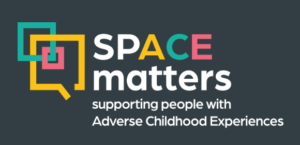These seven films from Nip in the Bud are on average 4 minutes long. They provide easy-to-use tips and guidance for teachers who have vulnerable children in their classroom who might be showing signs of a mental health condition or already have a formal diagnosis.
Emotional wellbeing support for vulnerable pupils
Introduction
The following information and links include checklists, advice and guidance and resources to use with children and young people in all settings.
Subjects covered and resources provided include transition recovery for primary and secondary learning, getting ready to go back to school, as well as support for early years, children in care, those affected by Adverse Childhood Experiences (ACEs), young carers, those at the risk of exclusion, and those with health needs.
Here are some key things to consider for your most vulnerable students:
- Having safeguarding risk assessments in place for vulnerable pupils
- Up to date health care plans that reflect any changes
- Ensuring that there are named staff assigned to support individual pupils’ wellbeing
- Making wellbeing part of the curriculum
- Updating Pastoral Support Plans
- Conducting pupil/parent/carer surveys about their experiences at home
- Considering whether part-time and/or phased return timetables might make it easier for some
- Offering some specific activities for pupils such as:
- Transition, Recovery and Learning (Primary)Transition, Recovery and Learning (Secondary)
- Getting ready to go back to school
Supportive adult relationships will be an important for vulnerable pupils from all groups. Research has shown that the potential for schools to support traumatised children, or to prevent an escalation of need is huge, and that it is through the school community that we can wrap our children in the safe and consistent place that will nurture and begin to create normality again.
Supporting the reintegration of Early Years Early child development sets the foundation for lifelong learning, behaviour, and health. The experiences children have in early childhood shape the brain and the child’s capacity to learn, to get along with others, and to respond to daily stresses and challenges.
Young Carers
A young carer becomes vulnerable when the level of care given and responsibility to the person in need of that care becomes excessive or inappropriate for that child, risking a detrimental impact on that young person’s emotional or physical wellbeing, educational achievement or life chances.
Supporting young carers and vulnerable children toolkit
Children in care
This includes those children and young people known to Specialist Children’s Services, currently or previously in care, or adopted. It is important to give some time to reflect on those pupils you have identified as having experienced complex trauma/Adverse Childhood Experiences (ACEs) and who may have underlying attachment difficulties. This group includes Children in Care (CIC) and Previously Looked After Children (PLAC) – but it is highly likely there will be other children in your vulnerable groups who this also could apply to.
Here are some key resources for your school to use to help you plan for these pupils returning to school:
Those at risk of exclusion
As you know, behaviour is a form of communication and expression of feelings can be difficult for some children and young people. Families and their children may be experiencing high levels of stress and anxiety during this time so it is important to recognise this. Checking in regularly and considering this, is essential.
Pupils often misbehave because they know how teachers will react. Teachers’ reactions sustain and strengthen undesirable behaviour, therefore they must learn not to follow their first impulse as this could feed the mistaken goal – Caroline Broomfield (Plymouth University).
Advice on how to reduce the risk of exclusion
Adverse Childhood Experiences and Trauma
 Should a child have experienced an actual trauma, then a period of time adjusting to this is normal and most young people process this and accommodate the experience in an adaptive way. We also know that naturally processing trauma is more effective than formal treatment.
Should a child have experienced an actual trauma, then a period of time adjusting to this is normal and most young people process this and accommodate the experience in an adaptive way. We also know that naturally processing trauma is more effective than formal treatment.
However, if the young person is still experiencing Post-Traumatic Stress disorder (PTSD) symptoms a month on, then it is appropriate to seek formal support via the Children and Young People’s Mental Health Service (CYPMHS).
This guidance below will help to enable school staff to evaluate current practice and ensure the readiness of the setting to receive pupils. It provides key questions, aspects to consider and links you may find useful.
Adverse Childhood Experiences and Trauma
Exposure to childhood adversity can strengthen and transform a young person’s level of resilience, equipping them with coping mechanisms to deal with life changes in adolescence and adult life – Marsten (2014).
This is of course when the right support and guidance is given to the child. Within education we have the opportunity to ensure all children become resilient and life-long learners.
Those with health needs
- Making sure Health Care Plans are updated and understood.
- Gaining the pupil voice is vital – exploring their possible concerns about returning to school.
- Ensuring detailed risk assessments are in place.
- Ensuring the school has the latest medical evidence based on the child’s health needs.
- Following Government guidance.
Explaining, Exploring and preparing the return to school
Supporting People with Adverse Childhood Experiences (SPACE) Matters website is a collaborative project across Kent and Medway to prevent and reduce the impact of adverse childhood experiences (ACEs). Trauma Informed principles are available for Kent schools.

